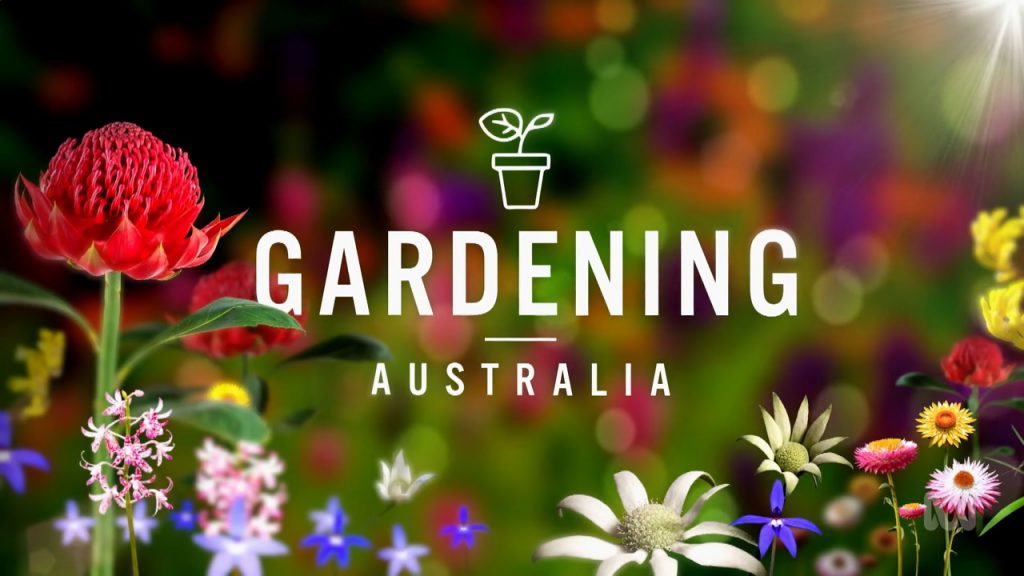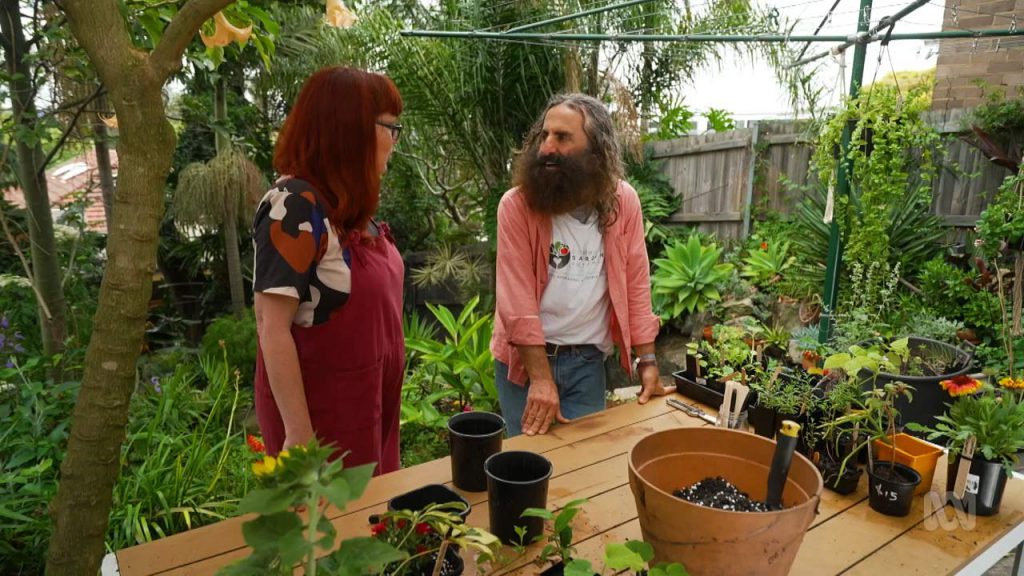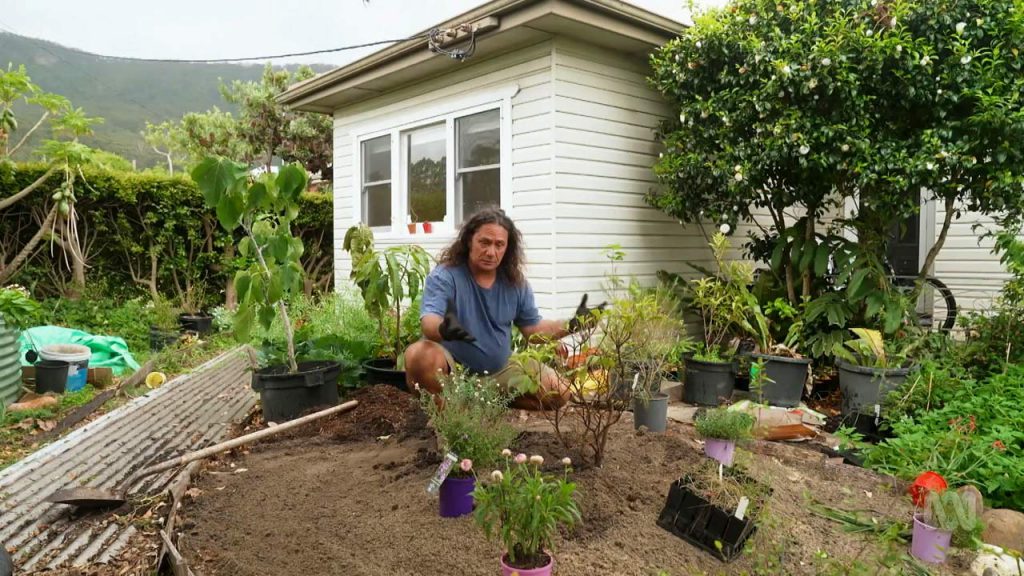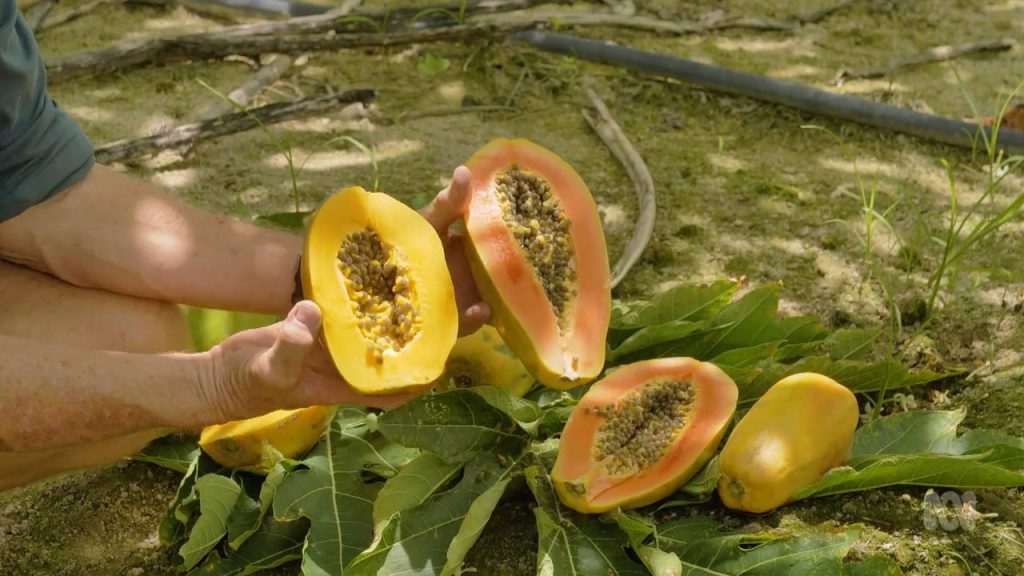Gardening Australia episode 35 2022: Costa works with landscapers of all abilities; Josh visits a daylily grower; Millie grows a water garden; Hannah wards off pesky weeds; Sophie learns about dune ecology; we meet a farming family celebrating perennial plants.
Costa gets hands-on with a group of professional landscapers to learn how a Canberra gardening crew empowers workers of all abilities. Josh heads out to the Wheatbelt to meet a woman who has cultivated an awe-inspiring collection of over 750 daylily varieties. Tino shows the ideal spacing for planting corn to improve pollination and cob production. Jerry shows us how to propagate a Thai blue tassel fern Huperzia goebelii.
Inspiring, entertaining and full of practical advice, join Costa Georgiadis and the team as they unearth gardening ideas, meet avid gardeners and look at some of the most inspiring gardens from across the country.
Gardening Australia episode 35 2022
Propagating Tassel Fern
Simply take a couple of tip cuttings at the beginning of summer. The cuttings will be placed in a hanging basket with a coconut liner. Place a square of shade cloth in the bottom as a liner, to hold the mix in place as the coconut fibre rots. Fill with thoroughly moistening coconut coir. Lay the cuttings on top. Cover the mix with a light dusting of more fibre. Cover again with a dampened paper towel, to create a moist enclosure. Mist twice a day
Jerry says the most important things are moisture, humidity and warmth. Expect roots within a few months, when the cuttings burst through the paper towel.
Cultivating Careers
Costa gets hands-on with professional landscapers to learn how a Canberra gardening crew empowers workers of all abilities. Being a professional gardener is a great way to make a living. Everyday is different and you get to be creative, active, and continually learn from new challenges. Costa met a gardening crew in Canberra employed by a social enterprise growing skills and opportunities for people of all abilities.
A day in the life of horticulturist and second-in-charge Dillon Crane includes lots of weeding, pruning, feeding, planting and assessing the needs of a garden. He says it’s good to return to the same gardens frequently as “you can see if things have grown back or if things have improved or if they have not improved you can try and rectify it. When it does work it’s nice see.”
Horticulture student Shaelyn Quirke has been with the team for two years and says “I’ve settled in really well and I’ve enjoyed every step of the way. It’s very interesting you get to see all the plants, the ways that they grow, be out with nature and interacting with other people.”
Shannon Cook has found her passion by working with the crew and enrolled to study horticulture. She says the best perks of the job are “being outdoors is a really big thing for me, being active, can’t sit still I get bored. And just seeing the difference you can make in someone’s garden, it’s so beautiful to see the transformation after you put in so much effort.”
Daylily Dreaming – Gardening Australia episode 35 2022
Josh is in the Western Australian Wheatbelt, 150 kilometres inland from the Perth Coast, on a 40 degree day. The paddocks are a patchwork of brown and gold, but amongst them an oasis seems to rise out of the heat haze. This is no mirage, it’s very real. Josh has made the trip out here in search of daylilies, and all the verdant green emerging is a sign, he must be close.
He visits a 160-acre property to meet Lena Elliott, an experienced nurserywoman and dedicated daylily grower. After running nurseries with her late husband, in 2013 Lena decided to find a property all of her own to grow a garden. She explains starting from scratch in this stunning location. ‘About a third of the property is wetlands. The stone cottage was here, but none of the landscaping.’
Lena was born on 1000 acres of virgin bush, the first born Australian to Italian immigrant parents post-WWII. She says, ‘there was a shortage of everything. An abundance of land but no water and no pretty things. My father, being a pragmatic man, believed that if you were going to spend time on anything it would be growing food, not flowers. I think that is what influenced me, I wanted to grow pretty things.’
Lena had a vision for her garden, but she needed some help executing it, in the form of her neighbour, John McGrath. The farmer dropped in to give Lena a hand early on, and he hasn’t stopped working. He helps with the reticulation, rock walls, gravel paths, anything! More than just helping hand around the property, John has dug his way into Lena’s heart.
Whipping Weeds
Hannah shares her simple, stress-free methods to keep various weeds under control in a productive garden. If you don’t manage weeds in the vegie patch, they will compete with your produce, stealing nutrients and smothering seedlings. They could even escape to other parts of the garden or bushland. There are a few simple things you can do to keep them under control and give you the confidence to tackle any that slip through the cracks!
There are many species of weeds with many different growth types. The key to managing all of them is to get in early, before the roots are established and before they set seed and spread!
Perennial weeds
Weeds like Wild Sorrel and Twitch Grass live and reproduce over many years. These two species also spread via rhizomes, so you need to dig deep and carefully to remove all parts of the plant. Anything left behind can turn into a new plant!
Some perennial weeds have very long, strong tap roots, like wild fennel and dock. Try levering these out with a garden fork.
Annual weeds
Annual weeds like Milk Thistle and Chickweed are often small and go through their life cycle very quickly – but if left to flower, they can produce thousands of seeds per plant and thus never-ending generations of plants. Mulch beds well in the warmer months to smother these weeds and stirrup hoes are useful for those that pop up between rows of vegies.
Silage tarps
When Hannah prepares new beds, she smothers the soil to kill off both perennial and annual weeds. First, she cuts finished vegies such as broad beans, off at the base rather than pulling them out roots and all. This is to reduce soil disturbance, which weeds love! Next, the soil gets a good feed with compost and a deep soak, before being covered with a silage tarp. This method encourages weeds to germinate but then die off as there is no sunlight. It also activates the soil biology and heats up the weeds which breaks down the weed waste.




